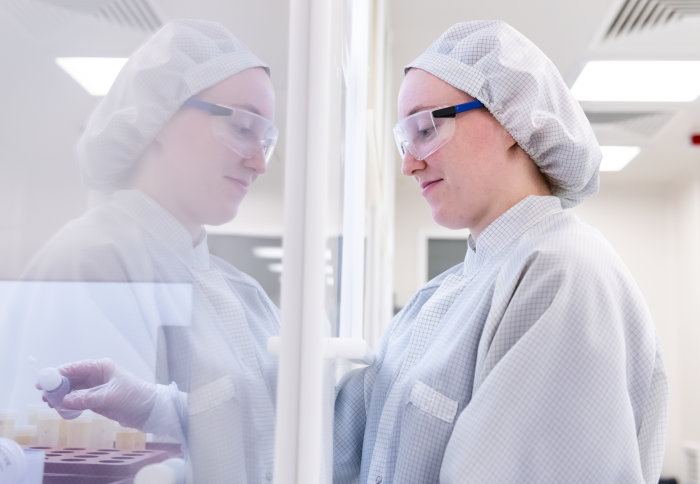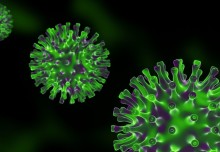
Dr Rebekah Moore testing for zinc isotopes

Imperial College London researchers have developed a new urine test that looks to ‘chemical fingerprints’ for more precise zinc testing.
This new approach, outlined in a new paper published in Metallomics, could provide more specific tests to warn of zinc deficiency – particularly in developing countries.
Caroline Brogan spoke to lead author Dr Rebekah Moore, from Imperial’s Department of Earth Science and Engineering, to find out more.
What is zinc deficiency?
Accurate diagnosis (could) prompt people to adjust their diet where possible, including using zinc supplements where appropriate, before serious health problems develop. Dr Rebekah Moore Department of Earth Science and Engineering
Estimates suggest up to 1.3 billion, or one in six of the world’s population, could be suffering from zinc deficiency.
Zinc is a component in many bodily proteins, including over 300 enzymes – so it plays an important role in all our cells and affects growth, hormones, the immune system, the brain, and other organs.
A lack of zinc therefore slows down wound healing and causes appetite loss, hair loss, fertility problems, and susceptibility to infection. Infants who are zinc deficient are at particular risk of infections and stunted growth.
Why do people become zinc deficient?
Experts recommend a daily zinc intake of between 8 and 11 milligrams (mg). Not eating enough zinc-rich foods (such as meat, shellfish, legumes) is certainly part of the problem – but the main issue lies with diets based largely on cereal crops, which are common in developing countries.
Cereal crops contain zinc that is ‘bound’ to compounds called phytates. Humans lack the digestive enzymes needed to break the bonds between zinc and phytates, so zinc is excreted without being absorbed into the body.
Why do we need a new test ?

Zinc deficiency is currently diagnosed using blood, urine, and hair tests. However, the tests are infamously insensitive, meaning they miss a lot of deficiencies even where symptoms are present.
We believe this is because these tests don’t look for specific enough ‘pools’ of zinc, so that they only capture a snapshot of the information on the total amount of bodily zinc.
How is the new test different?
Zinc exists in different forms - known as isotopes - depending on the number of subatomic particles - called neutrons - they contain. As current tests look only at total amounts of zinc, we wondered if detecting zinc isotopes might help us find more specific indicators to make tests more robust.
Our bodies contain varying amounts of five different zinc isotopes. Variation in the amount of each isotope can signal changes in the way biological processes work – acting as ‘chemical fingerprints’.
Different zinc isotopes ‘bind’, in varying amounts, to different chemical elements (such as oxygen, nitrogen, and sulphur) in the body. These chemical elements are found in our proteins, so different proteins will be ‘bound’ to different proportions of zinc isotopes.
It therefore follows that if people have different proportions of these molecules in their bloodstream, each urine sample will carry a unique make-up of zinc isotopes. Understanding this difference is key to developing a test for zinc deficiency.
So, we developed a new method that looks for ratios of the different forms of zinc in urine.
What does your paper show?
Specifically, we saw that ‘heavier’ forms of zinc in the urine reflect less ‘total’ zinc, which indicates that different molecules are in the blood and urine.
How could the new test help people with zinc deficiency?
Our results suggest that the test, and our ideas around zinc isotopes, hold promise. Dr Rebekah Moore Department of Earth Science and Engineering
Most people with zinc deficiency live in developing countries, where access to clinics and healthcare can be limited. Urine tests are, by design, easier to use than blood tests, most obviously in that people can more easily use them by themselves, away from a clinic.
We hope a more accurate diagnosis of zinc deficiency will prompt people to adjust their diet where possible, including using zinc supplements where appropriate, before serious health problems develop.
What’s next?
Our results suggest that the test, and our ideas around zinc isotopes, hold promise. However, the study is the first to look at zinc in this way, so more research is needed to further interpret the findings and make them useful in real-world tests.
In the next study, we plan to engage with more people of more diverse age ranges and backgrounds. In these people we will look further into the connection between zinc in blood and in urine. We want to find which molecules are being signalled by our isotope testing to see how one sample can represent overall availability of zinc in the body.
Our ultimate aim is to find a robust indicator that recognises what these chemical fingerprints are showing us, and to roll out tests to remote populations.
“Assessment of coupled Zn concentration and natural stable isotope analyses of urine as a novel probe of Zn status” by Rebekah E. T. Moore, Mark Rehkämper, Wolfgang Maret, and Fiona Larner. Published 9 August in Metallomics.
Photos:
Main - Imperial College London/Dave Guttridge
Body - Shutterstock.
Article text (excluding photos or graphics) © Imperial College London.
Photos and graphics subject to third party copyright used with permission or © Imperial College London.
Reporter

Caroline Brogan
Communications Division

Contact details
Email: press.office@imperial.ac.uk
Show all stories by this author




Leave a comment
Your comment may be published, displaying your name as you provide it, unless you request otherwise. Your contact details will never be published.